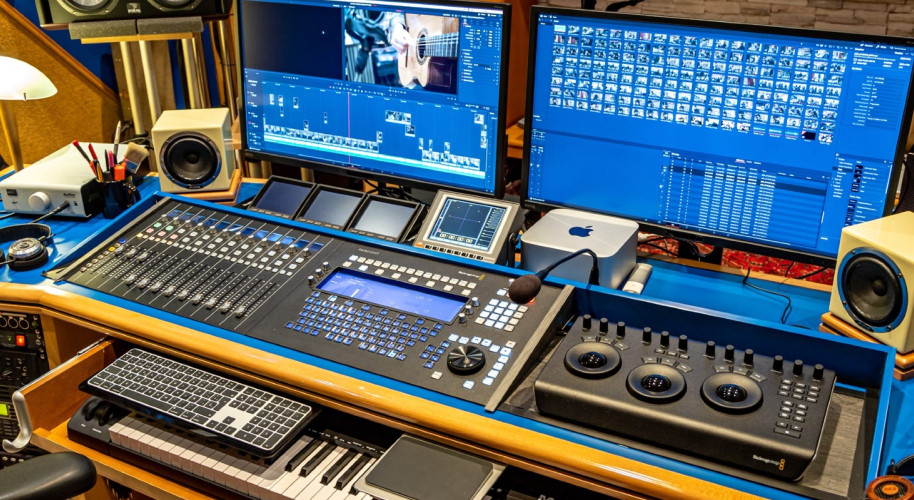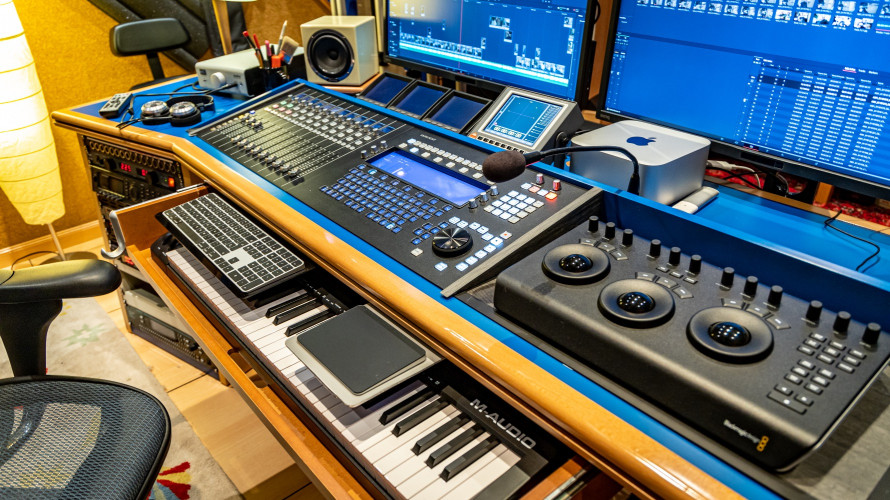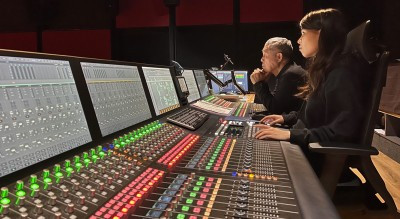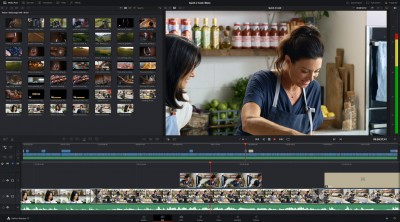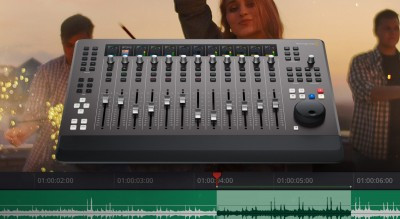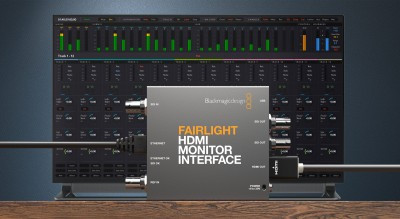Just over fifty years ago, the then Soviet Union launched the first satellite into orbit around our planet. At that time the USA and USSR were in the depths of the cold war and the launch of Sputnik 1 on the 4th October 1957 was the starting gun for the space race. The winner would be the country to successfully land the first human being on the Moon and return them safely to Earth.
US President Dwight D Eisenhower enacted the initiative to form NASA, the National Aeronautics and Space Administration, and as history now shows, the investment, support and self belief of this organisation led to Neil Armstrong and Buzz Aldrin taking the first small steps for man on the Moon. The space race was won but the exploration continues right up to the present day with the space shuttle, the Hubble telescope and the Mars Explorer.
To celebrate the formation of NASA, the Discovery Channel commissioned “When We Left Earth: The NASA Missions”, a six-part series from UK-based Dangerous Films (www.dangerousfilms.co.uk). Dangerous have an impressive track record of producing intelligent, entertaining and high quality documentaries covering a wide variety of topics. For this project they dug deep into NASA’s vaults to reveal never-before-seen footage that tells of the successes and failures of the space project over the years.
With Dangerous I had previously mixed “Diana: The Last Days of a Princess”, “Human Body: Pushing the Limits” and the docu-drama “911: The Twin Towers”, with “911” winning the 2007 BAFTA for best sound factual and the 2007 RTS award for best sound drama. So it was great to find myself once again invited to be involved in mixing the audio for such a high profile production.
There was just one small issue, my company Sound Monsters had been one of the first to fall in the demise of the London centric post market so I upped sticks (to avoid the banks!), moved out of town and I was now working out of Fairlight’s well-equipped demo suite in Sydney Australia.
Could we make this a truly global production? Thanks to NASA’s orbiting satellites and the wiring up of the World Wide Web, the answer was yes!
I’ve been a Fairlight user for many years and have worked on the company’s MFX, MFX3plus, QDC and Xynergi platforms. The relationship benefits us both as I am able to provide input into the company’s product development and in return I get to use the suite in Sydney, which incorporates a five-bay Constellation mixing system with an integrated Xynergi edit controller.
My role at Fairlight has involved directing the development of the company’s ground breaking Xynergi Media Production Centre, which is based around the amazing CC-1 card. This one PCIe card gives me a 230 channel, 72 buss mixer with a 192 track integrated DAW that also replays uncompressed high definition video. On each of my 230 channels I also have three stages of dynamics, Compressor, Expander/Gate and Limiter and 8 bands of parametric EQ, all with virtually zero latency (0.33ms @ 48k). I can also have up to six VST plug-ins per channel, with automatic delay compensation again ensuring zero latency through the system. All of this comes from a single card housed in an ‘off the shelf’ PC.
The NASA project was going to be a great opportunity for me to show off the power of the CC-1 based system. As the CC-1 audio engine delivers such rich and incredible sound quality, I wanted to use as much of the internal processing as possible.
The first task was to organise getting the track-laid material from the UK and into the system as quickly as possible. It was decided that we would use the tried and tested ftp site approach. What we had discovered from earlier tests was that the route the data travels from the UK to Sydney is via many nodes across Europe, Asia and overland from Perth. Even though Fairlight have a high speed connection (thanks to iTunes Australia being nearby), the download rate was still painfully slow. I discovered that by using the services of a commercial file handling company the data took the much faster route across the Atlantic, across the USA and straight into Sydney from the USA.
As a further challenge, the voice-over artist Gary Sinise was based in Chicago so his VO had to be ISDN’d to London before being fitted into the final programme.
Once downloaded and unzipped the 25Gb of video and audio files, which had been exported from Nuendo as AAFs were simply dragged and dropped onto the Xynergi timeline and opened. It sounds easy, but along the way I discovered that Steinberg had not properly implemented their AAF export from Nuendo. Luckily for me Digby Richards, who works in Fairlight’s R&D department (and is the person responsible for the creation of the ubiquitous file translation software AV Transfer), was able to compensate for Nuendo’s anomalous file export and all went smoothly from then on.
For us ‘users’, life would be so much more pleasant if things just worked!
By the time all the files were downloaded I ended up with somewhere in the region of 140 Tracks divided into Dialogue, Music, Sound Design and Sound FX. 96 of those tracks were just taken up by the music which was recorded and mixed by Geoff Foster at London’s Air Studios. These were delivered as 5.1 stems divided into various instruments such as strings, drums, brass etc. and then split into A and B reels as Discovery were going to insert their own part breaks into the final mixed programmes.
On the Xynergi I was then able to use VCA groups to manipulate these stems and route them via my busses which I configured as 5.1 wide. The busses on the Xynergi are true busses in the traditional sense, that is to say, all signals are summed within the CC-1 card and passed onto the next stage of the signal path without introducing any sample delays or phase errors. This is just one of the many reasons the system sounds so good. Believe me it really does sound fantastic!
When replaying all 140 odd tracks with HD video and simultaneously recording to the remaining 52 tracks, I knew with confidence that all my signals were sync, sample and phase accurate. Even when jogging I was able to listen to all 192 tracks, all the time still perfectly locked to my on board HD video. It’s the closet thing to tape that I have ever worked with.
Using the onboard dynamics and EQ I had complete control of my gain structure and with the combination of Xynergi’s hi-resolution Peak/RMS meters and a borrowed (dreaded!) LM100 there was no problem with meeting Discovery Channels stringent technical specification. There’s actually a whole other discussion to be had regarding ‘Dial Norm’ but this soap box ain’t big enough!
For mixing I utilised the Fairlight 12 fader sidecar. This gave me all the feel and control I needed. And, by using Fairlight’s ‘Fader Sets’ fader banking, I was able to logically spread my channels, busses and VCA groups out in a very coherent manner.
On completion of my mix I simply switched my spare tracks into ‘Tape mode’ and proceeded to lay-back all my stems in one hit. If I did need to do any pick-ups I was able to just rewind and drop in and out of record at any point, with the BWavs being instantly healed (rendered) and ready for export.
For Discovery Channel I had to deliver the following:
- 5.1 Full Mix
- 5.1 M&E
- 5.1 Dialogue
- 5.1 Music
- 5.1 Music A
- 5.1 Music B
- 5.1 SFX
- Stereo Full Mix
- Stereo M&E
- Stereo Dialogue
- Stereo Interviews Only
- Stereo Archive sound Only
- Stereo Music
- Stereo SFX
- Mono VO
Once finished, the final BWavs were zipped up and up-loaded ready for the production team in the UK to have a listen to and sign off for final approval prior to delivery to Discovery Channel in Washington.
This process continued for about three weeks with all episodes being delivered on time and passing through tech-review without a glitch. In this age of budget cuts (penny pinching) and the increasing overheads of a central London facility, I am certain many other projects could benefit from this 24/7 global approach. I’d be more than happy to discuss these financial benefits with anyone who might be interested.
Later in the schedule, I received a call advising me that Astronaut John Glenn was going to be addressing the US Senate in Washington. Along with Discovery Channel founder John Hendricks they intended using one of the episodes to assist in stating NASAs claim for increased funding. This would have been ok, except they chose to use an episode that we hadn’t even posted at that stage. So, I downloaded the material and started mixing at 9am Sydney time ..(Thursday).., sent back my mixes to London for their sign off at 9am UK time ..(still Thursday).., following which they uploaded to the US at 9am Washington time ..(still Thursday!!).. for transfer to the HD master. It was then that I realised with Xynergi, Fairlight hadn’t just re-defined the modern DAW but at the same time they may have also have perfected the mythical “Flux Capacitor.”





